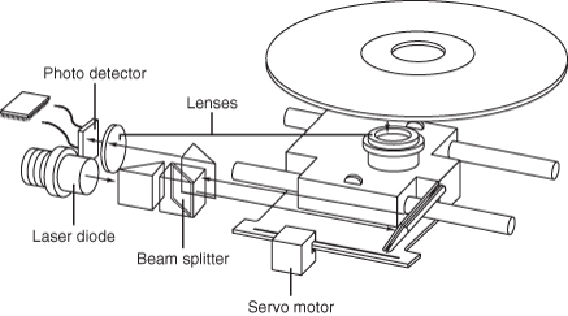Hardware Reference
In-Depth Information
When introduced, CD-ROM drives were too expensive for widespread adoption. After
the production costs of both drives and discs began to drop, however, CDs were rapidly
assimilated into the PC world. This was particularly due to the ever-expanding size of
PC applications. Virtually all software is now supplied on optical media, even if the disc
doesn't contain data representing a tenth of its potential capacity.
Tracks and Sectors
On the traditional 74-minute CD, the pits are stamped into a single spiral track with a
spacing of 1.6 microns between turns, corresponding to a track density of 625 turns per
millimeter, or 15,875 turns per inch. This equates to a total of 22,188 turns for a typical
74-minute (650MiB) disc. Current 80-minute CDs gain their extra capacity by decreas-
ing the spacing between turns. See
Table 11.1
for more information about the differences
between 74-minute and 80-minute CDs.
Table 11.1 CD Technical Parameters

